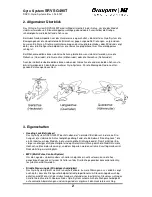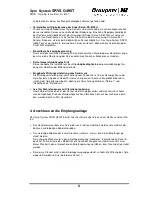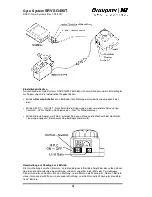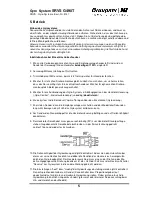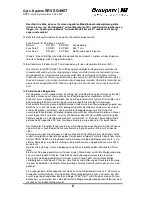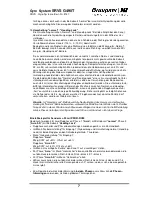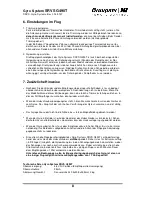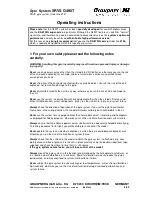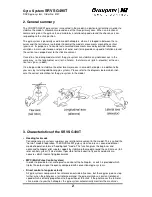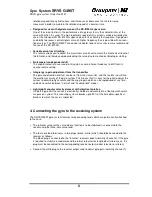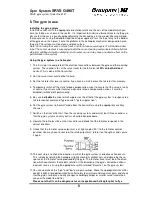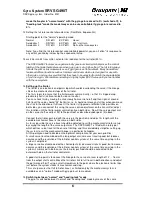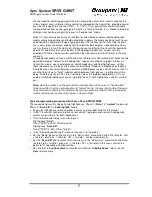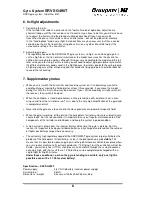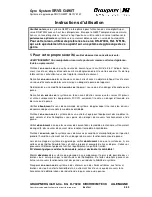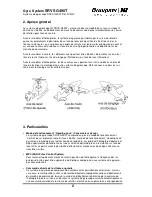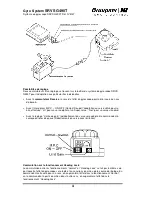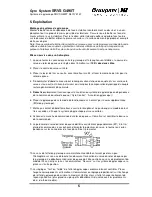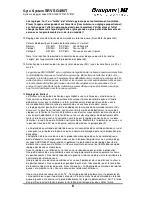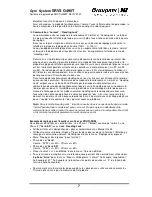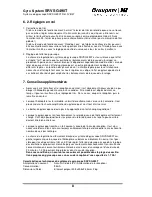
Gyro System
SRVS G490T
SRVS gyro system, Order No. 5137
2
2. General summary
The JR SRVS G490T gyro system is mounted in the model in a particular orientation in order to
stabilise the model’s movements around one of the three primary axes. When an intentional
command is given, the gyro sets and maintains a rotational speed around the chosen axis cor-
responding to the stick position.
The gyro system is generally used in model helicopters, where it is looped in between the re-
ceiver and the tail rotor servo in order to control the model’s movements around the vertical
(yaw) axis. Its purpose is to counteract unwanted movements caused by outside influences,
variations in main rotor torque and gusts of wind, and it also provides a speed of rotation around
the vertical axis proportional to the stick movement.
If used in a fixed-wing model aircraft, the gyro system can stabilise any individual axis in the
same way, i.e. the longitudinal axis (roll - ailerons), the lateral axis (pitch - elevator) or the ver-
tical axis (yaw - rudder).
It is also possible to stabilise the other two major axes in a model helicopter, in addition to the
yaw axis, by installing additional gyro systems. Please refer to the diagrams below which indi-
cate the correct orientation for the gyro system in the model.
3. Characteristics of the SRVS G490T
•
Heading lock mode
Conventional gyro systems suppress any rotational movement in the model. This is called the
"normal" mode of operation. The SRVS G490T gyro system features a second, additional
mode of operation termed "heading lock" mode. This function gives the beginner and
advanced helicopter pilot superb support by stabilising the model around the vertical axis (tail
rotor control system); it also makes it possible for the expert to fly exotic aerobatic ma-
noeuvres which involve flying backwards.
•
MPC (Multi-Pulse Control system)
In order to provide faster, more precise control of the helicopter, a switch is provided which
triples the output signal frequency compared with conventional gyro systems.
•
Direct control of angular velocity
All gyro systems compensate for unforeseen outside influences, but these gyros go one step
further: when the pilot gives a tail rotor command, the gyro maintains a constant rotational
speed which is directly proportional to the position of the stick. If the pilot moves the tail rotor
stick in order to yaw the helicopter, the gyro system automatically monitors the machine’s


